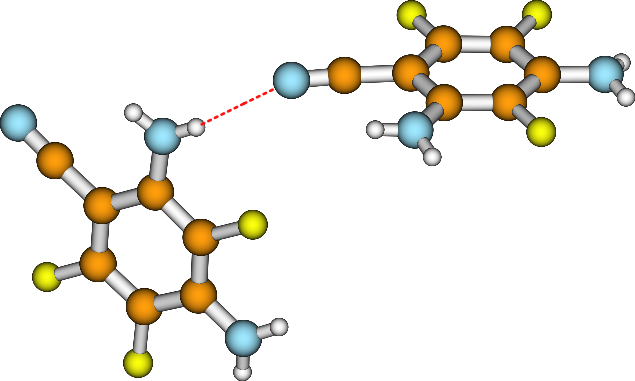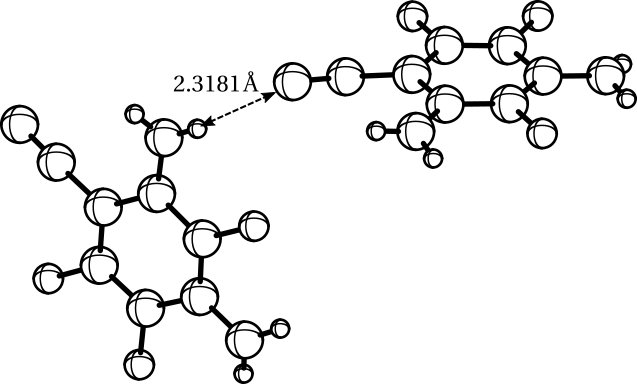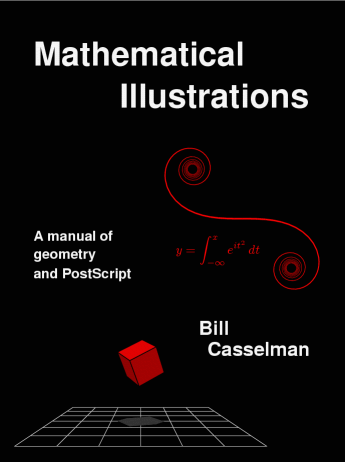Vector graphics are great for illustration purposes. Molecules are made up of atoms linked by bonds. I would like the operations of editing a drawing of a chemical structure to be carried out according to the physical structure of molecules: select an atom, transfer it, rotate a fragment of a molecule, sign ... Almost all visualizers of atomic structures export the view to a raster, which complicates the preparation of illustrations. In this post, I'll explain how to render 3D structures in vector format, and how PostScript can help you with this .

Quite a lot of programs are able to export structure to vector graphics: SVG, PDF, EPS. However, this is often done only formally - the resulting images consist of many primitives, it is almost impossible to disassemble them by atoms and bonds. The size of such a vector file is also large, in a word, it's a disaster. Of the many molecular constructors, only two satisfy the quality of the vector image code : GaussView and Molden . The latter program is available to everyone, so the examples are built with its help, however, all the recipes below are applicable (with some modifications) to vector illustrations made by GaussView. So Molden!

, PostScript.
PostScript
:
%!PS-Adobe-2.0 EPSF-2.0
%%Title: Molden
%%For: Schaft
%%Creator: Drs G Schaftenaar
%%DocumentFonts: Courier
%%Pages (atend)
%%BoundingBox: 0 0 612 792
%%EndComments
%
%###### User Preferences ############
%
%---- SIZE AND ORIENTATION OF THE PLOT ---
%
/size { 0.24 } def
%---- These number can be negative -------
/originx { 39.0 } def
/originy { 753.0 } def
/angle { -90.0 } def
%For Portrait use
%/originx { 40.0 } def
%/originy { 240.0 } def
%/angle { 0.0 } def
%and BoundingBox: 25 255 535 765
- \doatom
, - \dorod
. Molden.
%---- Include Tabel & Logo, Fontsize -----
/tabel {true} def
/titleandlogo {true} def % false!
, 4082 . .

.
%---- SET BOND RENDERING: ---------------
%---- shadedrod, whiterod, blackrod -----
%
/doatom { dosketchysmoothatom } def
/dorod { sketchyshadedrod } def
%
% ( )
/dosketchysmoothatom % doatom
{ gsave
rx ry translate
90 -15 1 % 90 1 1 -
{ gsave
dup cos hue exch satu exch sethsbcolor sin dup scale
newpath
0 0 rad 0 360 arc
closepath fill grestore } for
grestore } def
/sketchyshadedrod
{ gsave
x1 y1 translate
x2 x1 neg add
y2 y1 neg add
{atan neg rotate} stopped not {
85 -15 0 % 87 -3 0 -
{dup
gsave
newpath
cos 1.0 cosb 0.5 mul neg add mul
hue exch satu exch sethsbcolor
sin 1.0 scale
1 cosb scale
0 0 hd 0 180 arcn
x2 x1 neg add dup mul
y2 y1 neg add dup mul
add sqrt
0 cosb eq {/cosb 1.0 def} if 0 exch cosb div translate
0 0 hd 180 360 arc
closepath fill
grestore } for
} if
grestore } def

!
/doatom { docirclecoloratom } def
/dorod { dostick } def
% , ,
/stickwidth {16} def
/stickgreycolor {0} def
/strokelinewidth {4} def
/docirclecoloratom
{ gsave
strokelinewidth setlinewidth
rx ry translate
newpath 0 0 rad 0 360 arc closepath
gsave
hue satu 1.0 sethsbcolor fill
grestore
stroke
0 0 rad 0.75 mul -60 0 arc
stroke
grestore
} def
% dostick Molden
:

, . - 3 . , , . - . .
/docircleatom
{ gsave
strokelinewidth setlinewidth
rx ry translate
newpath 0 0 rad 0 360 arc closepath
gsave
1 setgray fill
grestore
stroke
gsave
1.00 0.55 scale
0 0 rad 0 180 arc
stroke
grestore
0.55 1.00 scale
0 0 rad -90 90 arcn
stroke
grestore
} def
This code will radically reduce the drawing to black and white. As in old books.

Conclusion

PostScript is surprisingly good at creating illustrations. It's easy to learn. In this post, I gave a way to do simple, but sometimes very, very necessary things when preparing a publication or poster for a conference. However, you can go further! I highly recommend the book Mathematical Illustrations .